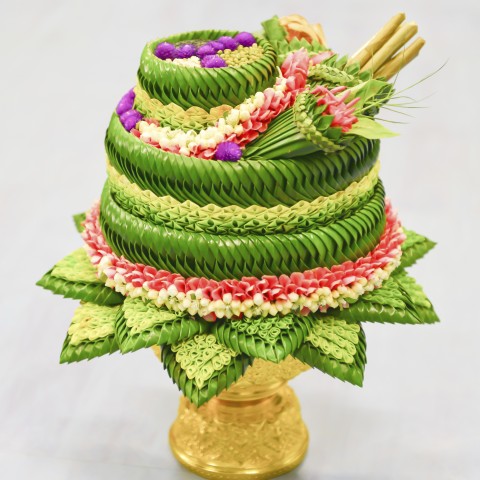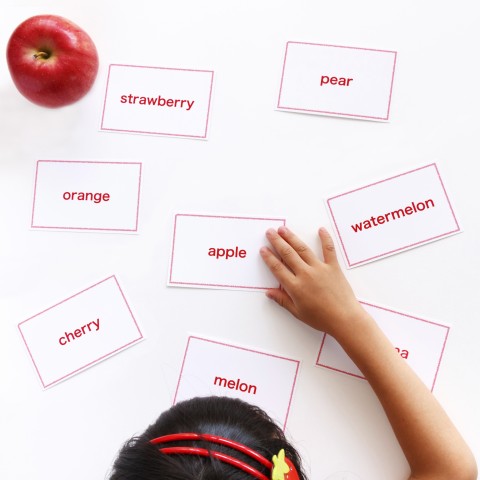
When speaking monosyllabic languages such as Thai, pronunciation is not always the main thing you need to be worried about — it’s how you deliver the tone. This is why learning Thai through a structured online course is essential.
For instance, online courses come in audio or video formats, meaning you can always play and replay a lesson. Tonal inflections are tricky to learn, and making sure that you can listen to them repetitively makes sure that you can communicate clearly.
With the increasing preference of consumers to find online options, it’s no surprise that many are jumping on the online learning bandwagon. And the benefits are many.
In this article, we will explore the many reasons why learning Thai online is effective and some tips and tricks on how to do so.
Table of Contents1. Benefits of learning Thai online
In addition to having your life so much easier when you can speak, read, and write Thai, here are more benefits of learning Thai online from the comfort of your home.
A- Learn anytime, anywhere
Although the best Thai language schools are in Thailand (obviously), there is no need to be physically in Thailand for you to get quality learning. You can study whenever, wherever — while waiting for your documents at the ChaengWattana Immigration, taking the BTS to work, or enjoying your cup of joe at Starbucks.
You can even do so before you come to Thailand. (And get brownie points from the Thai embassy, where you’ll eventually apply for your Thai visa.)
B- Learn at your own pace
Take your learning as fast or as slow as you need to. Is there any area of the language that you feel you could do with more time spent on it? Or would you like to go back to a specific vocabulary word that you keep on forgetting and want to focus on it? Or maybe you simply want to master the five tones and take a quick break from learning?
All of these you can do without affecting the progress of other learners, similar to what could happen if you were taking in-person classes.
C- Ensure personal safety
The pandemic brought with it the need to wear masks and physically distance ourselves from others. And many are still hanging on to these two practices to have a sense of personal safety. If you feel the same way, you have all the more reasons to take your learning online.
You can stay in the comfort of your home and avoid the commute and the crowd.
2. Tips and tricks for learning Thai online
Learning on your own comes with its own set of pros and cons.
But by setting the right expectations and learning from the mistakes of others who have successfully done it, you can improve the outcome of your Thai language learning.
Here are some tips and tricks to ensure you have a productive online learning experience:
A- Start with the basics
It always pays to start with the rubrics of the Thai language and follow a structured learning path. For example, mastering the vowels, consonants, and the five tones will ensure that speaking and reading sentences will be easy later.
One of the many learning resources that I prefer is ThaiPod101. The platform has four levels: Absolute Beginner, Beginner, Intermediate, and Advanced.
Although the Absolute Beginner is for those who have zero knowledge, it also uses conversations of real-life scenarios and a breakdown of the words used in the conversation.

Learn ‘survival phrases’ even before you land in Thailand
Absolute Beginner courses also feature ‘survival phrases’ such as those you need to learn when ordering food, riding a bus or train, basic courtesy words, and many others.
This is very useful when you just arrive in Thailand and need basic and easy words to help you live or travel here easier.
After that, you can take their courses on the Thai alphabet, consonants, and tones. It will help you to learn Thai much faster since it gives you a strong foundation for learning Thai later on.
B- Follow a regular schedule
Set a schedule for yourself that will allow you to learn regularly. Even with the Free Lifetime Account, ThaiPod101 lets you access 3-5 new lessons per week and 3 lessons per day.
Choose a time when you can concentrate on the lessons without any distractions.
Create long-term and short-term goals and use them as a basis for your study plan. Whether you prefer to follow a daily or weekly schedule, make sure to commit to them. It can be quite challenging to do this when you first start but sticking religiously to a schedule allows you to build a habit — it soon becomes second nature to you.
C- Learn, review, repeat
The best way to ensure the retention of the lessons is to review them regularly. On ThaiPod 101, you can print out the lesson notes and transcripts that accompany the audio lessons.
Since both resources are available for download, this is especially helpful if you’re going somewhere with a poor internet connection. This makes sure that you don’t miss out on any of the lessons.
D- Make your learning unique to you
Personalize your learning by taking advantage of tools from ThaiPod101. Subscribe to the ThaiPod101 Word of the Day, which allows you to get a new word in your email daily.
This can serve as your reminder to follow through with your lessons. Learning one word a day helps you build your vocabulary, which will come in handy when learning syntax and context later on.
Additionally, if your focus is to enrich your vocabulary, ThaiPod101’s paid subscription has a section dedicated to Vocabulary. It allows you to build your personalized word bank and make use of visual flashcard decks.
You can also create a list of the 100 most common words, 2,000 most common words, Thai phrases, and so much more.

Build your list of 100 or 1,000 words that are completely unique to you
You can make these lists unique to your daily experiences so that any time a situation comes up, you know what to dig up to help with your Thai conversation.
E- Feel free to follow along (or not)
ThaiPod101’s lessons come in 2 to 10-minute audio and video clips, so all you really need is your phone and internet connection. You can practically do this whenever and wherever. And since the lessons are already planned out for you according to your set learning pathway, there is no need for you to come up with a lesson plan, browsing around on what to learn next.
If you do take the pathway laid out for you, take note that you need to take an assessment every 2-4 lessons. The assessment requires you to achieve a 70% grade to move forward. It will also suggest you review the lessons and retake the assessment if you cannot pass the required grade.
On the other hand, if you don’t want to take the pathway, you can also listen to or watch the 1-minute video on demand.
F- Seek help if needed
There’s nothing more important than recognizing when you need help.
If you have doubts or get stuck on a lesson, don’t hesitate to reach out to an instructor or an expert on the language. You’ll be better off having a professional having your back when needed instead of trying to find the answers by yourself on the internet.

If all else fails, help is available whenever you need
For example, the Premium Plus subscription on ThaiPod101 comes with 1-on-1 access to a teacher. There is a tool called My Teacher Messenger where a chat box is available at all times so you can communicate with your assigned teacher while taking the lesson.
3. To conclude
There are many modalities of learning the Thai language. But if you prefer to learn at your own pace, learning online is your best bet. Many are the benefits of online learning, and these include unrivaled convenience, not having physical barriers, making sure you stay safe in the era of the pandemic, flexible time management, and so much more.
However, to ensure that your online learning experience is effective, you need to keep yourself accountable. It takes discipline to learn by yourself, so it is important to create goals and plans and make sure to stick to them.
Also, finding the most suitable online platform that caters to your personal needs is crucial. One of the most popular options out there is ThaiPod101.
With a number of features and tools that the platform offers, it is easy to see how ThaiPod101 was able to help many non-Thai speakers learn to read, write, and speak the language at their own pace.

































![How Thai People ไหว้ [Wâi]](https://wordlist.languagepod101.com/wordlist/media/26168&v=medium.jpg)




















